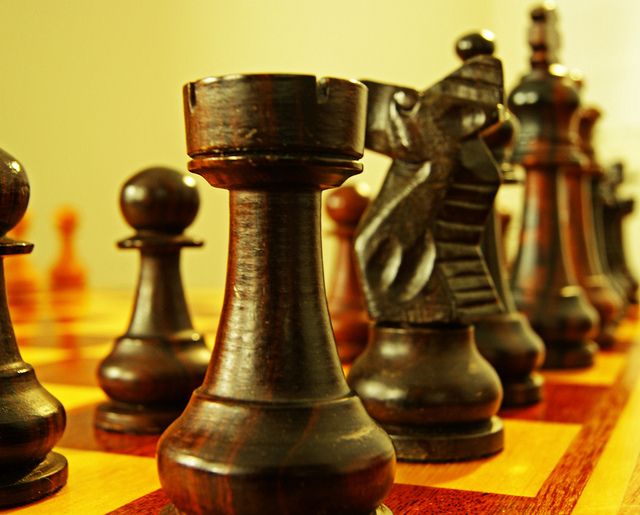
Rooks on the Seventh, Revisited
Despite his irritable personality and somewhat dogmatic assertions, Aron Nimzowitsch (1886-1935) is the undisputed patriarch of modern positional thought.
In his magnum opus My System (1925), Nimzowitsch formulated and verbalized a litany of strategic concepts (prophylaxis, overprotection, and blockade, just to name a few) that we now take for granted.
Although many of his principal contentions are now regarded as self-evident, I believe that there is one notion in particular that chess players still routinely misunderstand: the power of two rooks on the seventh (second) rank.

Castle at the Fore by William Pitcher
It is tempting to assume that two rooks are stationed on the seventh rank for one purpose only: to deliver checkmate.
However, with the eighth rank defended by an enemy rook or queen, two rooks on the seventh (TRS) can almost never checkmate the king by themselves.
I will illustrate with a simple example.
Nimzowitsch himself was quick to establish that TRS derive their power not only from their attacking potential, but also from their mobility and restrictive capacity. Indeed, operating two active rooks requires far more technique and subtelty than one might think. In this article, I would like to shed some light on how this technique should be developed.

Projekt 52: Türme by 5auge
In many cases, TRS should be treated as a transitional advantage -- one that should be transformed into a more tangible one. This can either be done by by forcing a favorable trade of rooks, or by winning material. The following game furnishes a textbook example of the latter.
Once all of the pawns were eaten, the two rooks had nothing left to do on the second rank. When the occasion called for it, Pantsulaia did not hesitate to make them fulfill a defensive duty on the g-file.
As for exchanges, it can be quite painful to trade an ultra-active rook for a significantly more passive one, but sometimes there is simply no other way forward. In the next game, Czech IM Jan Sikora Lerch demonstrates the power of concrete thinking.
Frequently, it is a good idea to call up an auxiliary force (usually a pawn) in order to increase the pressure along the seventh rank. In order to prevent said pawn from reaching the sixth rank (thereby supporting one of the rooks and making checkmate a real possibility), your opponent might well be forced to make a fatal concession.
Once again, notice that White did not advance his h-pawn with the express intention of giving checkmate; he was merely aiming to win the g6 pawn by utilizing a tactical nuance (the impossibility of 37...gxh5).
And now, please try your luck at the following exercise. Remember: the threat of mate should often be used as a way of transforming the advantage.
Everyone loves "pigs on the seventh" (a nickname introduced by GM Yasser Seirawan in his Winning Chess series -- it makes me laugh every time), but hopefully, I have been successful in showing exactly why they are so dominant. Adieu!
RELATED STUDY MATERIAL
- Check out GM Daniel Naroditsky's previous article: Can a GM and Rybka beat Stockfish?
- Watch GM Dejan Bojkov's video on what rooks dream about!
- Take a beginner's lesson on two rooks on the 7th rank in the Chess Mentor.
- Learn your rook tactics in the Tactics Trainer.
- Looking for articles with deeper analysis? Try our magazine:The Master's Bulletin.






